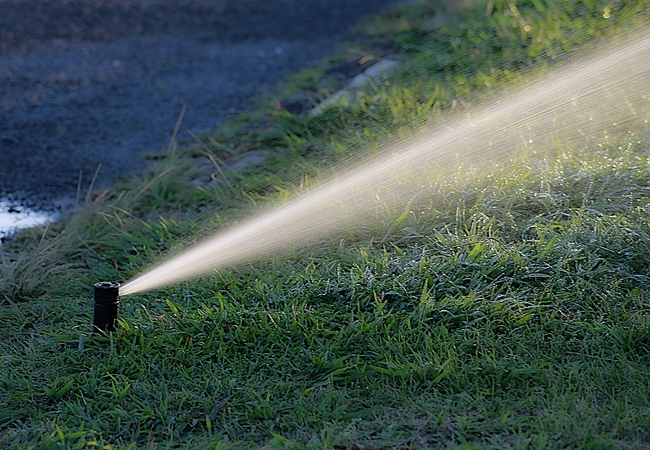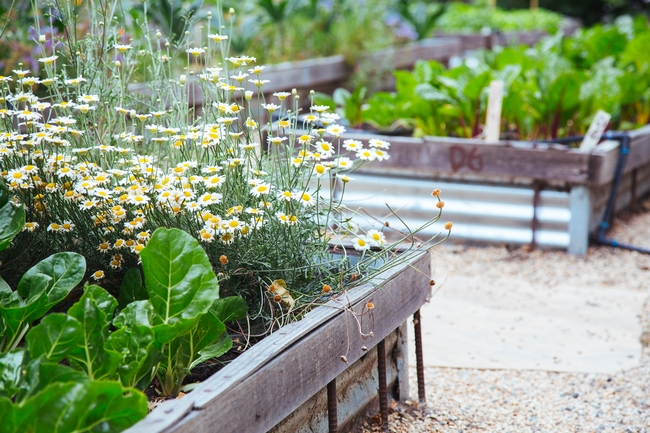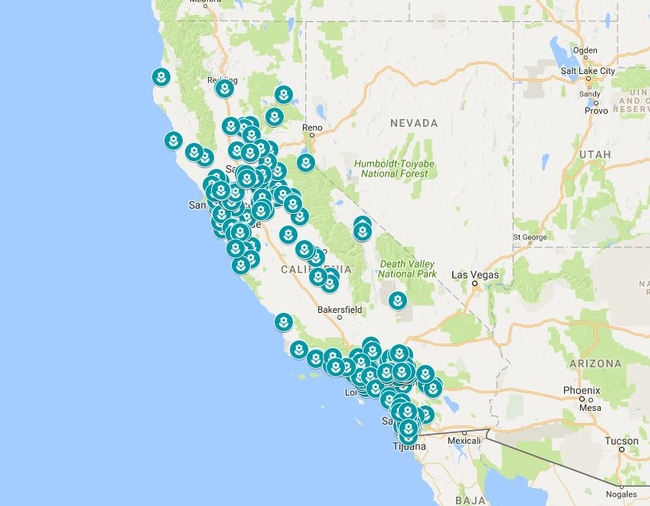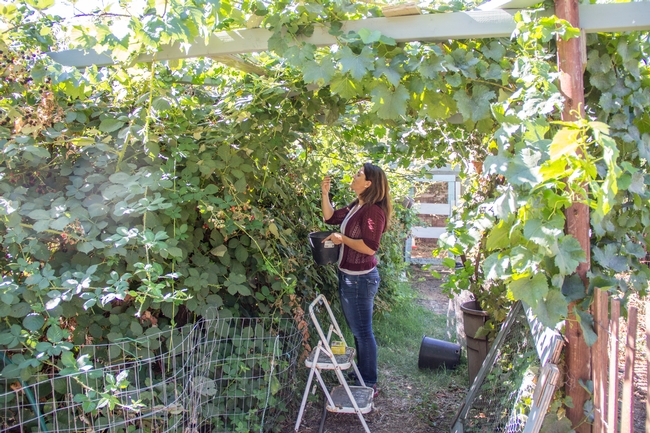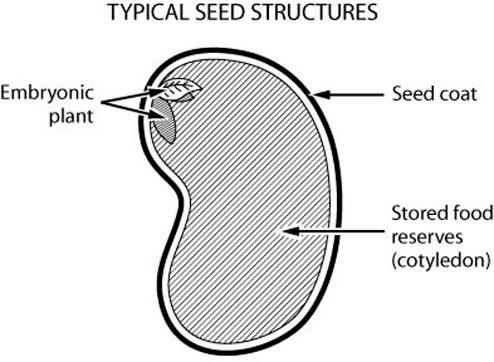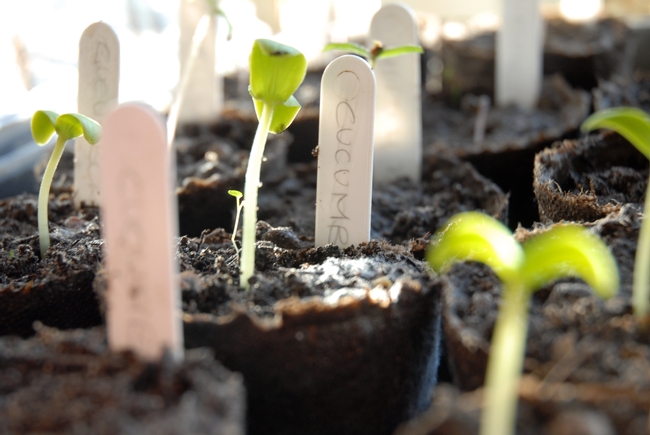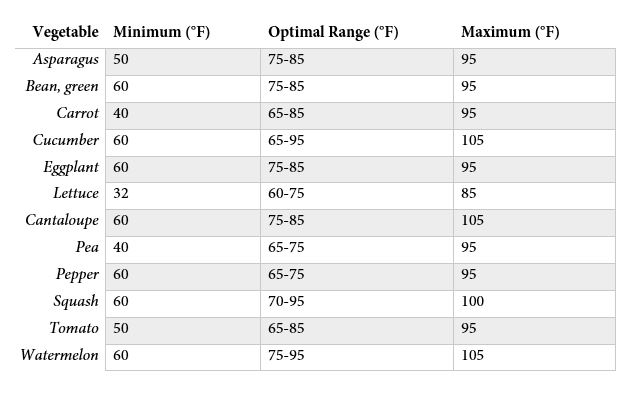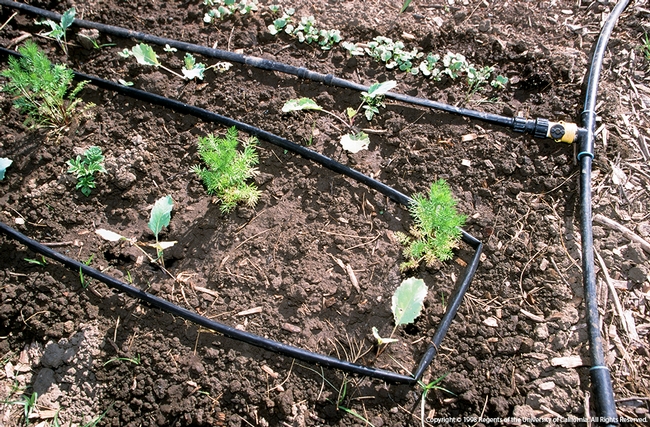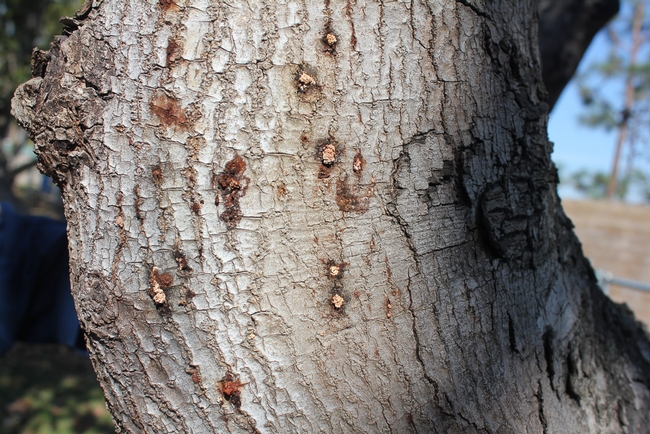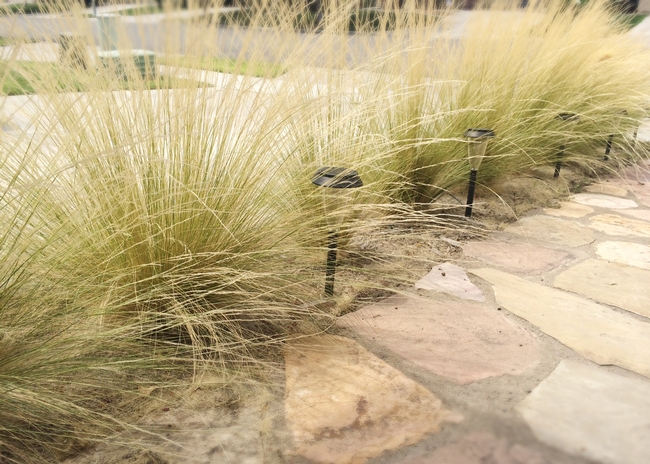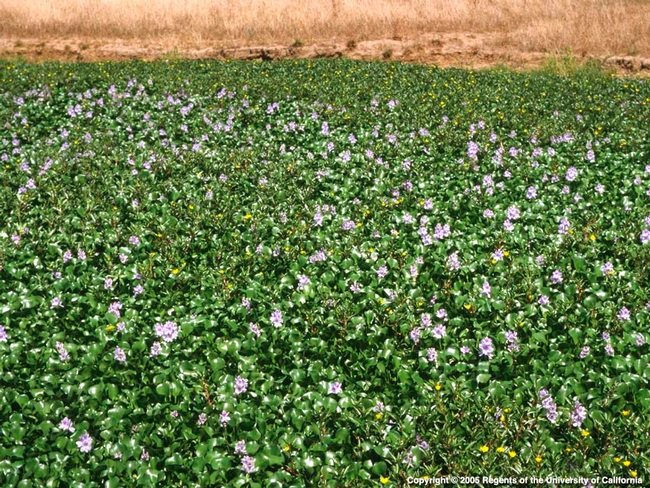Posts Tagged: UC Master Gardener Program
UC Master Gardeners ‘Garden Walks’ conserves millions of gallons of water annually in Marin
The Marin Municipal Water District has saved nearly 30 million gallons of water since it initiated a partnership with UC Cooperative Extension's Master Gardener program in Marin to teach residents how to conserve water.
The program, Garden Walks, was established in 2008 to help Marin conserve water in a district with limited supply. MMWD purchases about 75% of its water from reservoirs on Mt. Tamalpais and in west Marin, and the rest from Sonoma County's Russian River water system.
Garden Walks provides personalized information and advice to water district customers focused on improving their irrigation practices to conserve water. The part-time coordinator sets up about 150 appointments a year for UC Master Gardener volunteers to visit the homes of Marin County residents and teach them how to manage their outdoor water usage with conservation in mind.
“When we finish our visits, I hope that the client is more confident about being proactive in their garden,” said Pam Polite Fisco, the program coordinator. “We hope they will be saving water, will use natives and will encourage wildlife in their gardens.”
The volunteers, dispatched in pairs, spend about an hour at the homes. They walk the garden and talk with residents about grouping plants with similar water requirements, adding mulch to the soil surface and composting clippings, leaves and other green waste so it stays on the property.
The UC Master Gardeners teach the residents how to check their water meters and use the meter to help determine whether there are leaks in the system. They provide advice on water-conserving plants, such as natives or other drought-tolerant plants. They ask the residents to run their sprinklers and other irrigation systems to ensure they know how to manage the controls.
The majority of the water savings realized by the program stems from repairing leaks and cutting back on overwatering, said Steven Swain, UC Cooperative Extension horticulture advisor and the technical advisor to the Marin County Master Gardener program.
As part of their agreement with UC Cooperative Extension, the Marin Water District monitors changes in water usage and reports them annually on their website, allowing Swain to determine the program's impact.
The majority of water savings during the life of the program is attributable to just one quarter of the houses Master Gardeners visited; three quarters of participants were managing water sustainably.
“Sometimes, our volunteers just give the residents a pat on the back and compliment them for a job well done,” Swain said.
About 6% of the clients visited have hidden water leaks in their irrigation systems. These leaks can waste huge amounts of water if not caught, and account for a large portion of the water savings. Another 18% of clients are overwatering, which accounts for much of the rest of the savings.
Considering the value of the water conserved by the Garden Walks program, the $40,000 annual cost to hire the coordinator is more than offset by the reducing amount of water the district must provide.
This program has received a number of awards, including the Marin Conservation League's Ted Wellman Water Award in 2010. In 2011, it received first place in the UC Master Gardener's Search For Excellence awards and the Community Outreach Award at the National Extension Master Gardener Coordinating Conference. Marin County residents have also praised the program.
“The Master Gardener team was friendly, professional and helpful and shared their positive attitude to their garden and their outreach,” said Fairfax resident ‘Julie' in a follow-up survey
‘Jean' of San Rafael said, “I'm a beginning gardener. They helped me figure out how to start off right.”
A number of California counties were inspired by the success of the Marin County Garden Walks program and have adopted similar efforts to visit homeowners and assess irrigation efficiency.
View a video about the Marin Garden Walks porgram:
Visit a UC Master Gardener demonstration garden, learn and be inspired
Birds are chirping, the sun is shining and flowers are in bloom – it is time to get out into a garden and enjoy nature's beauty. UC Master Gardeners have been working hard to bring demonstration and community gardens to life across California, and volunteers are eager to teach how you can create sustainable splendor in your own landscape.
The UC Master Gardener Program is in your community
Be inspired. Visit a garden that has the power of the University of California and the UC Master Gardener Program behind it. With thousands of volunteers, hundreds of demonstration, school and community gardens across California and programs in 50 counties plus Lake Tahoe basin it is easy to discover the joy of gardening in your community.
Hit the road and get excited about gardening
UC Master Gardener demonstration gardens showcase best practices for garden management from plant selection to ground covers and irrigation. Demonstration gardens can appeal to everyone as they often include multiple themes like bumble bees, growing veggies, historical roses and low water–use plants.
Things you can discover in a demonstration or community garden:
- Mediterranean or native plants
- Roses
- Ornamental grasses
- Succulents
- Orchard trees and vegetables
- Pollinator habitats
- Composting
- Irrigation methods
- Mulch
Whatever your interest, you'll be sure to take something away from your visit to one of the many gardens across California. Find a location by visiting the UC Master Gardener Program garden map: http://bit.ly/2qqWRM4.
“When on a road trip I love to stop, stretch my legs and walk around a garden in a new town or city. It gives me an opportunity see new and unique plants that grow in different areas, plus I have the opportunity to recharge,” says UC Master Gardener volunteer Lauren Hull. “Recently, I was driving to Lake Tahoe and made a point to stop and visit the Sherwood Demonstration Garden, it was the perfect break during the long drive!”
UC Master Gardener classes share science-based gardening practices
For more direct educational opportunities, attend a gardening workshop hosted by local UC Master Gardener Program. Workshops are free or very low cost and cover a vast array of gardening topics. To find a UC Master Gardener event in your area, visit: mg.ucanr.edu/Events.
As you plan your summer travel, consider attending a workshop or event where you are vacationing. The UC Master Gardeners of Orange County are teaching the power of perennials on May 20, UC Master Gardeners of Santa Barbara County will present at the Santa Ynez Valley Earth Day celebration May 21, the UC Master Gardeners of Tuolumne County will have a Kids' Day in the Garden on June 3 … and so many more events to choose from!
“Attendees at workshops, classes and on demonstration garden tours can expect to hear from gardening experts in their local community. UC Master Gardener volunteers have been trained by UC scientists to become a 'master' in the garden and are proud to share their expertise and knowledge with an inexperienced gardener or an industry professional,” said Missy Gable, UC Master Gardener Program director.
Take ideas home
Whether your landscape needs a total overhaul, a few new plants or nothing at all, the knowledge and new ideas gained from workshops and demonstrations gardens is inspiring. Invite bees, butterflies and hummingbirds into your life by adding pollinator friendly plants to an existing landscape. Become more water-wise by adding mulch, changing out sprinkler heads and replacing high water user plants. Continue growing as a gardener by staying connected with your local UC Master Gardener Program, and stopping at demonstration gardens throughout the state.
The UC Master Gardener Program extends to the public free UC research-based information about home horticulture and pest management. In exchange for the training and materials received from the University of California, UC Master Gardeners perform volunteer services in a myriad of venues. If you are interested in becoming a certified UC Master Gardener contact your local UC Cooperative Extension office.
Start seedlings for your spring-summer vegetable garden
Get a jump start on your spring-summer vegetable garden. Start growing seedlings indoors now to have young plants ready to go into the ground when the weather warms and there is no longer a threat of frost. Growing vegetables from seeds is a passion for many avid gardeners, but even a novice gardener can have fun and success with a little planning and effort.
While growing vegetables from seed requires a little bit of extra work, germinating your own seeds gives you access to a wider variety of vegetables than typically available from a local nursery. Many gardeners love experimenting by growing exotic or unusual flavors, colors, size or texture of their favorite edible.
What you will need:
- Seeds
Growing healthy seedlings starts with healthy and high-quality seeds. Make sure to purchase seeds from a reputable supplier, and read the instructions and recommendations on the seed packets for specific planting instructions.
Keep in mind that if you save seeds from your own garden, the plants they produce in the future may not be identical to their parents because they are a result of random open pollination. When saving your own seeds, clean and dry them and then place them in a container that will keep them dry. Store seeds in a cool location. - Germination mix
To start your seeds off right do not use garden soil or potting mix. Potting or garden soil it is too heavy, not sterile and does not drain well. It is recommended to use a germination mix that is a combination of one-third sterilized sand, one-third vermiculite and one-third peat moss which allows for air to circulate and is able to hold moisture, but still drains well. - Container
There are a variety of container options available for purchase, including flats or trays with dividers, or you can use small individual clay or plastic pots. It is also possible to use recycled items found around the house, like milk cartons, toilet or paper towel rolls, and plastic containers from yogurt to name a few. It is important to wash all containers thoroughly and soak and rinse in a solution of 1 part chlorine bleach to 9 parts water, to help prevent diseases from occurring to your delicate seedlings.
- Light source
Edible plant seedlings typically need a bright light source to develop into healthy plants. Oftentimes, indoor seed germination requires more lighting than what is available from a large window. When more light is needed, suspend fluorescent lights 6 to 12 inches above the seeds for approximately 16 hours per day. After the seeds have germinated, move the seedlings to a cool, south facing window with plenty of natural light. Check seed packets for specific germination tips for individual species. - Heat source
Most seeds have a minimum and maximum optimal temperature at which they germinate, check seed packets or catalog for recommended germination temperatures. Temperature is extremely important in having the highest germination success (see table). Most edible plants germinate faster in warm soil (75°-85°F), to provide a consistent heat source a heating mat can be used. Once seeds have sprouted the seedlings prefer slightly cooler temperatures so a heating mat is no longer needed.
Soil temperature conditions for vegetable seed germination, from the California Master Gardener Handbook (table 5.2):
- Water
Germination begins with the seed absorbing water. An adequate, continuous supply of water is needed to ensure successful germination. Once the germination process has begun try and avoid any dry or overly wet periods that may cause the young seedling to die.
After experiencing the wonder of watching a seed turn into a mature seedling it is time to transplant. To transplant, carefully dig out and lift the small plant out of its container. Prepare its new desired location by making a hole the same size and depth as where the seedling was growing, once placed firm the soil and gently water. When possible keep the newly transplanted seedling out of direct sun and heat for a few days.
Learn more with the UC Master Gardener Program
Interested in learning more about how to start seedlings or how to grow an edible garden? The UC Master Gardener Program has University-trained volunteers who are eager to help. Volunteers are available to answer questions about preparing your soil, fertilizing, mulching and more. With local programs based in more than 50 counties across California there is sure to be a workshop or class near you. Visit our website to find your local UC Master Gardener Program, mg.ucanr.edu.
Resources:
California Master Gardener Handbook, Plant Propagation, page 112-118, anrcatalog.ucanr.edu
California Gardening Web, Vegetables & Sustainable, How do I start seeds indoors?
Simple steps for preparing, caring for and harvesting a vegetable garden
There are several ways to overcome these gardening pitfalls to help ensure you have a successful warm-season vegetable gardening experience.
Plan, plan and stick with your vegetable garden plan!
Planning is a key component to having a successful vegetable garden, but is frequently forgotten or overlooked. Planning includes selecting an appropriate location for your garden, choosing the correct varieties of crops for your space and developing a garden plan for what you would like to grow.
When selecting a location it is important that the site receives at least eight hours of full sun, is close to a water source (hose, irrigation or hand-watering) and has good soil for optimal growth. Once you have an appropriate location picked out, creating a garden plan will help contribute to your growing success.
Too often the overall size of the garden area and the size of mature plants is not considered. Keep in mind a young plant can become established and quickly overtake a small garden lot, challenging or dominating other plants for resources.
“A well planned garden can provide fresh or preserved vegetables for use year-round. The plan should contain crops and amounts to be planted, dates of planting and estimated harvest, planting location for each crop, specific spacing between rows, and trellising or support required,” according to the California Master Gardener Handbook (see Figure 13.1 on Page 342).
Invest a little time and develop a detailed plan to help guide you on where, which type and how many plants you will need for your space. Your vegetable garden plan will keep you focused while shopping at your local nursery and prevent impulse buys of tempting transplants!
Caring for your vegetable garden
Irrigation is a key component in a successful vegetable garden. Consistent, deep and sufficient watering will produce better tasting and superior quality fruits and vegetables, especially during the hot summer months when it is easy for the soil to quickly dry out.
“As a rule” the handbook says on Page 349, “it will be necessary to irrigate your vegetable garden one to three times a week in summer ... The frequency will be determined by the depth of crop roots, soil texture, and weather conditions. Wet the soil to just beyond the bottom of the root system at each watering.”
Even in a time of drought, vegetable crops require the soil to remain moist during their crop cycle. Poor irrigation practices and infrequent watering will produce smaller yields and poor quality fruits and vegetables.
Weed prevention and maintenance is an important piece in caring for your vegetable garden. Without monitoring and controlling weeds, your crops could quickly become overrun by these pesky unwanted plants. Apply a three- to four-inch layer of organic mulch to discourage the growth of weeds. Prevent weeds by hand-weeding before they become established and go to seed. The UC Integrated Pest Management (IPM) Program has detailed information available on its website about sustainable weed management in the home landscape.
Harvesting (and enjoying) your crop
After all of your hard work, time and dedication growing your warm-season fruits and vegetables remembering when to harvest can be just as important as growing them. UC Davis' Postharvest Technology Center has easy to navigate Produce Fact Sheets to help guide you on when to best harvest your crops.
“To get the most from your vegetables, harvest them when they are at the best stage for eating and store them under conditions that will keep them as close to garden-fresh as possible,” recommends The California Garden Web. “Vegetables will be crisper and cooler when harvested in the early morning.” (cagardenweb.ucanr.edu)
Once harvested don't forget to enjoy the fruits (and veggies) of your labor. Few experiences can compare with the gratification of eating homegrown fruits and vegetables for the first-time!
Learn more with UC Master Gardeners
Interested in learning more about how to grow a thriving edible garden or home landscape? The UC Master Gardener Program has University trained volunteers who are eager to help. Volunteers are available to answer questions about preparing your soil, fertilizing, mulching and more. With local programs based in more than 50 counties across California there is sure to be a workshop or class near you. Visit our website to find your local UC Master Gardener Program, mg.ucanr.edu.
Early detection to prevent invasive pests – National Invasive Species Awareness Week
According to the Center for Invasive Species Research (CISR) at UC Riverside, “California acquires one new exotic species, on average, every 60 days. At this rate, around six new species establish in California each year. Estimated losses arising from the uncontrolled population growth of these pests amounts to an estimated $3 billion per annum.”
Exotic plants and pests can quickly turn invasive in their new environments because they no longer subject to natural predators or diseases that kept their populations under control in their native territories. Once an invasive pest starts to rapidly colonize and spread, it becomes increasingly more difficult to eradicate, causing both environmental and economic damage.
Prevention and early detection is key
The UC Master Gardener Program and its more than 6,000 volunteers play a critical role in helping stop and prevent the spread of invasive plants and pests in California through early identification and prevention.
Another of the many ways UC Master Gardeners are making a difference in early detection and prevention of invasive species is the participation in PlantRight's annual Spring Nursery Survey. Every year volunteers visit hundreds of retail nursery locations tracking the location of invasive plants being sold. The annual Spring Nursery Survey information helps the nursery industry replace invasive plants with environmentally safe alternatives.
Trusted resources and information
Since 1981, the UC Master Gardener Program has been an industry leader in extending UC research-based information about home gardening to the public. The UC Master Gardener Program's enthusiastic volunteers engage the public, share information, identify pests and recommend sustainable solutions. Contact your local program for questions about invasives by visiting mg.ucanr.edu.
So this year participate in National Invasive Species Awareness Week (Feb. 21-27) and share this information and its trusted resources like an “invasive.” Educating friends, family and neighbors is an important step in early detection and prevention!

